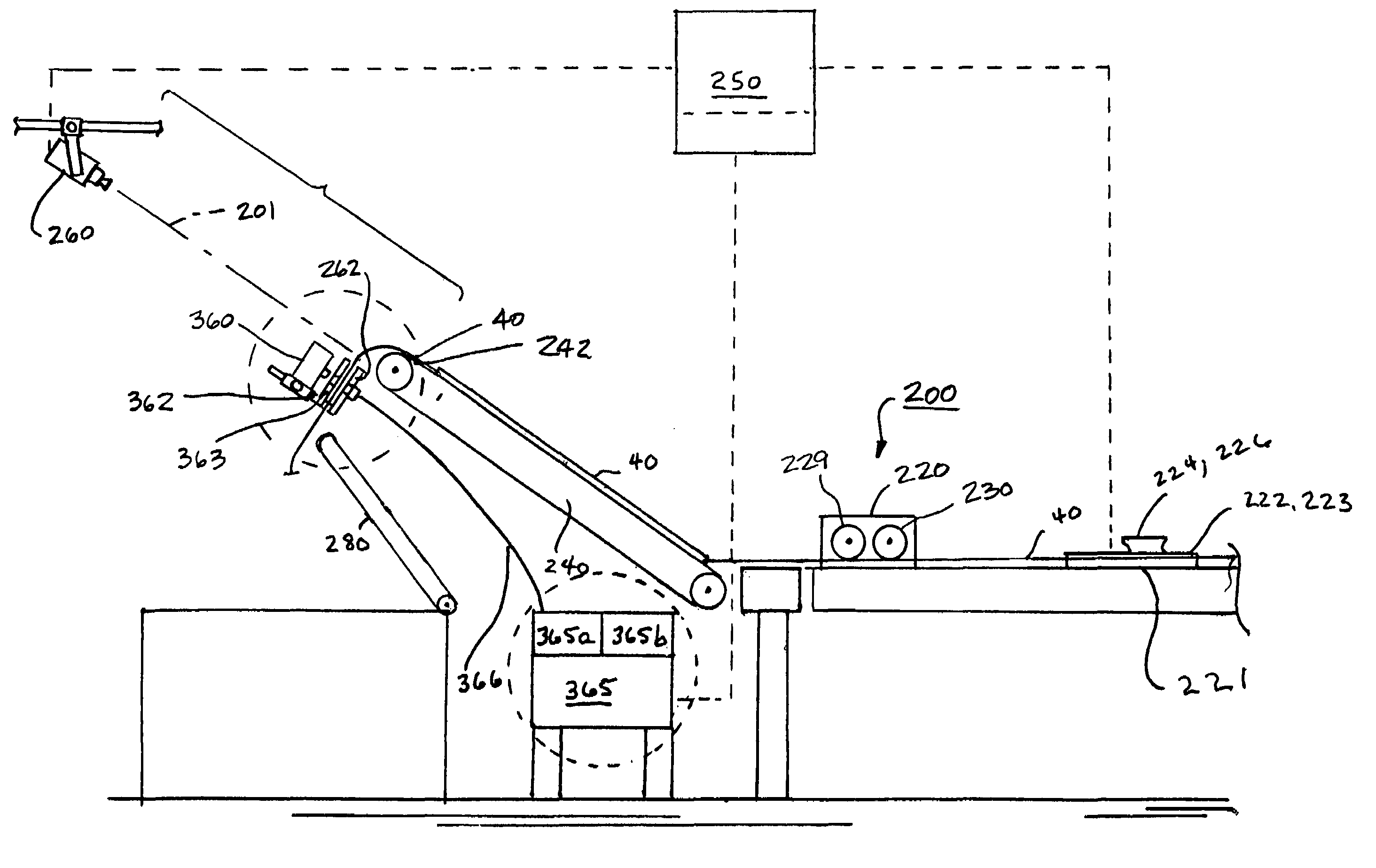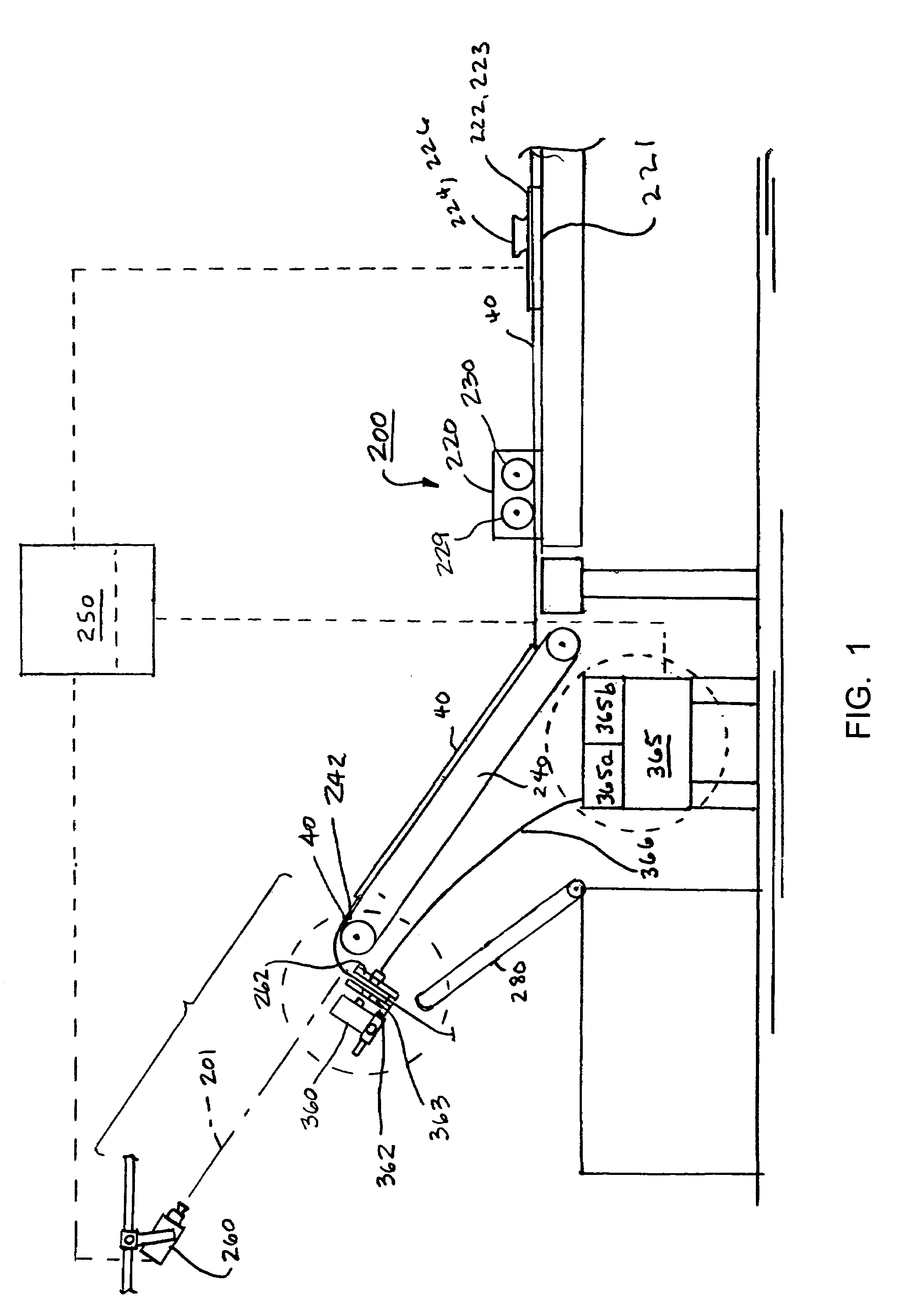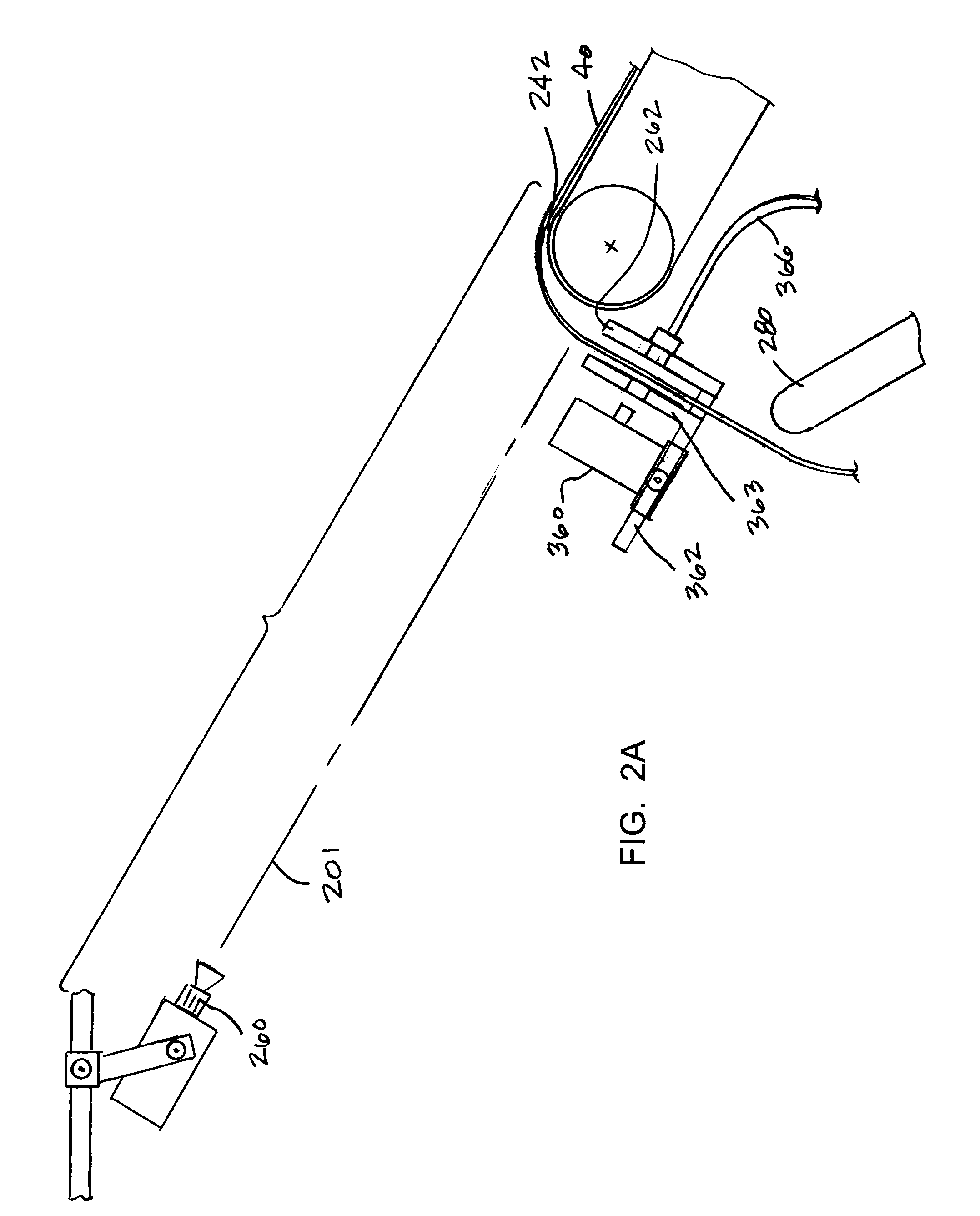System and method for controlling width and stitch density of a fabric web
a fabric web and control system technology, applied in shrinking, instruments, computations using non-denominational number representations, etc., can solve the problems of prior art control systems that tended to oscillate out of control, no consistent relationship between the width of the fabric web, and difficulty for a human operator to make accurate adjustments to the fabric web exiting the compactor at speeds approaching about 80 yards per minute. accurate and accurate fabric web width measurements
- Summary
- Abstract
- Description
- Claims
- Application Information
AI Technical Summary
Benefits of technology
Problems solved by technology
Method used
Image
Examples
Embodiment Construction
[0026]Certain exemplary embodiments of the present invention are described below and illustrated in the attached Figures. The embodiments described are only for purposes of illustrating the present invention and should not be interpreted as limiting the scope of the invention, which, of course, is limited only by the claims below. As can be appreciated, the invention can be practiced as a continuous process in a manufacturing environment, in connection with compacting a fabric web, for example. Alternatively, the invention can be reduced to practice as a table top unit for use in determining the width or stitch density of a sample fabric web on a piece basis. The invention may be used in connection with either fabric web width control or stitch density control, or both. Other embodiments of the invention, and certain modifications and improvements of the described embodiments, will occur to those skilled in the art, and all such alternate embodiments, modifications and improvements ...
PUM
 Login to View More
Login to View More Abstract
Description
Claims
Application Information
 Login to View More
Login to View More - R&D
- Intellectual Property
- Life Sciences
- Materials
- Tech Scout
- Unparalleled Data Quality
- Higher Quality Content
- 60% Fewer Hallucinations
Browse by: Latest US Patents, China's latest patents, Technical Efficacy Thesaurus, Application Domain, Technology Topic, Popular Technical Reports.
© 2025 PatSnap. All rights reserved.Legal|Privacy policy|Modern Slavery Act Transparency Statement|Sitemap|About US| Contact US: help@patsnap.com



